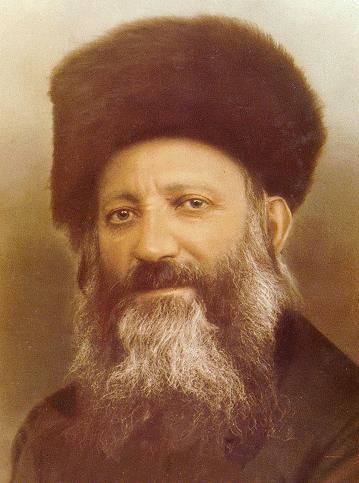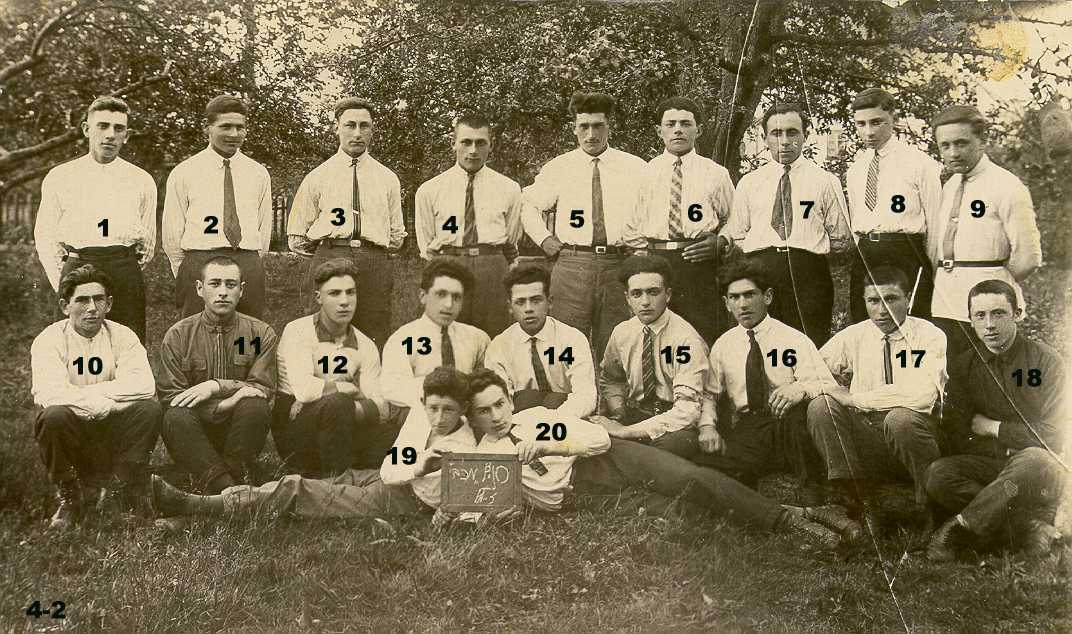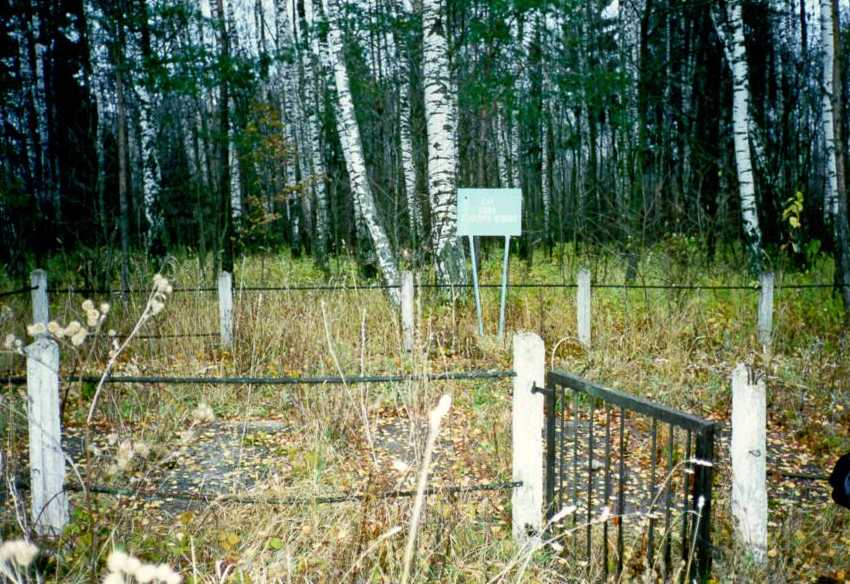Zheimel (Zeimelis)
Written by Yosef Rosin
English edited by Sarah
and Mordechai Kopfstein
Zheimel (Zeimelis in Lithuanian) is situated in the Northern Central part
of Lithuania four km. from the border of Latvia, its name having
been mentioned in old manuscripts dating back to the 13th century.
From the 14th until the 18th centuries the Zheimel estate had been administered
by German feudal lords, and the town of Zheimel which developed near the
estate was the county center from 1568 on. In 1613 King Zigmunt Vaza granted
Zheimel the privilege of holding two fairs a year.
Until 1795 Zheimel was part of the Polish Kingdom, but at that time Poland
was divided for the third time among the then three superpowers - Russia,
Prussia and Austria - and most of Lithuania, including Zheimel, was
apportioned to Russia.
During Russian rule (1795-1915) as well as during Lithuania's period
of independence (1918-1940), Zheimel was again the county's central town.
During the German occupation in World War I, Zheimel was connected by a
narrow gauge railway to Joniskis and before World War II a railway line
was laid which led from Zheimel through Joniskelis to Panavezys.
Jewish Settlement until
World War I.
Testimony to the fact that Jewish settlement in Zheimel was one of
the oldest in Lithuania can be seen on tombstones dating back hundreds
of years which were found in the old cemetery of the town, such as the
year of birth (1738) of the Jewish scholar Shlomo Zalkind Horovitz, who
was one of the students of Moses Mendelsohn and a member of the Sanhedrin
during the time of Napoleon. Horovitz was an expert on oriental manuscripts
in the National Library in Paris.
The Jews of Zheimel made their living from commerce and agriculture and
almost every family had a small holding near their home. There were 753
Jews in the town in 1847.
In a news item which appeared in the newspaper Hamagid in the year 1883,
it was reported that a synagogue, one of the oldest in Lithuania and a
study house (Beth Midrash) were built in 1862. In the eighties of the 19th
century, Zheimel gained publicity because of a dispute over the election
of a Rabbi for the town. Two camps formed in Zheimel, each one wishing
to impose their will on the other. As both sides were willing to use any
means, such as informing the authorities, coming to blows, and smashing
windows, the authorities had to intervene.
The dispute in Zheimel lasted until R. Abraham-Yitzhak Hacohen Kook, who
received his first appointment there, was elected Rabbi of Zheimel in 1887.
Rabbi Kook officiated in the town for 7 years and managed to make real
peace between the warring camps. During his tenure of office Rabbi Kook
enriched the library of the Bet haMidrash and strengthened the welfare
societies in the town, such as Hachnasat Orchin, Bikur Cholim, and Gemilut
Chassadim. Owing to his efforts a bath house and a sauna were also built.
In 1903 R. Kook immigrated (ascended) to Eretz Israel, becoming the Rabbi
of Jaffa. From 1918 he officiated as the Chief Rabbi of Jerusalem,
and from 1921 until his death in 1936 was the Chief Rabbi of Eretz Israel.

Rav Kook
The Rabbis who were appointed in Zheimel before and after Rabbi Kook
were R. Shlomo (from 1824 to 1864), R. Benjamin-Dober Diamand (from
1864), R. Shalom Elchanan Jaffe (from 1883), who emigrated to the U.S.
and was Rabbi in St. Louis and Brooklyn, R. Ya'acov-Dov Rappaport (from
1896), who settled in Kfar Saba, Israel, in 1926, acquired a vineyard
there and sent his son to cultivate it. R. Rappaport was the first Rabbi
of Kfar Saba.
In 1891 a welfare society, Lechem Aniyim - Bread for the Poor - was
established with the assistance of the Mayor Prince Liven, who donated
35 pud of flour (570 kg), 50 funt of sugar (205 kg), and 3.5 kg tea
to the society every 10th week. The Jewish benefactors were
Zvi Hirsch Abramowitz and Elijahu-Matitjahu Chajut. In the list of
donors for the Yishuv (settlement) of Eretz Israel during the years 1900
and 1903 many of the people of Zheimel are mentioned.
In 1897 its population numbered 1266 people, among them 679 Jews (54%).
After World War I, Zheimel was cut off from its big rural hinterland,
which was incorporated into Latvia. This fact and the policy of the Government
of Lithuania, which strived to undermine the foundation of the Jewish economy,
were the reasons for the decline of Zheimel’s Jews fortunes, as a result
of which many emigrated to South Africa, the United States, and Eretz Israel.
The Period of Lithuanian
Independence.
With the declaration of autonomy for the minorities, including the Jews,
in independent Lithuania, a community committee of seven members was elected
in Zheimel. It was active in most spheres of Jewish life in the town for
several years (1919-1925).
According to the first census carried out by the Lithuanian Government
in 1923, there were then 1209 people in Zheimel, including 378 Jews (31%).
The town was part of the Siauliai district.
During the years 1927-1928 Zheimel received much publicity because of a
trial against five Jewish butchers who were accused of the murder of the
local veterinary surgeon. The accused were each sentenced to five years
in jail, but the Supreme Court reduced their sentence to only eight months.
The Jews of Lithuania saw in this trial a Lithuanian version of the Beilis
blood libel trial of 1913 in Russia. One of the defending counsels of the
accused was the lawyer Dr. Ya'acov Rabinsohn, previously the first director
of the Hebrew high school in Virbalis. The well known lawyer A. Grusenberg,
the defending counsel in the Beilis trial, also advised the defence in
this case.
During this period the Jews of Zheimel made their living mainly by
commerce. There were merchants in the town who engaged in the export of
flax, grain, etc., Zheimel being then a center for the export of
flax. In the middle twenties 250 wagons of flax seeds and about 200 wagons
of flax would be exported from Zheimel during a season. Other Jews made
their living as buyers in the villages, teamsters, packers and similar
vocations.
During 1928 there was a severe crisis in Zheimel because the crops of
flax and grain had failed, as a result of which many Jewish families had
no means of support for their families, and thus a committee to help the
destitute was established to provide bread and wood for heating for those
in need. The Association of Zheimel Jews in America sent them $100, which
was divided among 28 very needy families.
According to a government survey from 1931, there were then in Zheimel
26 businessmen, 20 of whom were Jews, as detailed below:
| Branch
or sort of business |
Total |
Jewish
Ownership |
|
Grocery stores |
3 |
2 |
|
Flax and Grain |
7 |
7 |
|
Butcher shops & livestock trade |
2 |
0 |
|
Restaurants & pubs |
1 |
0 |
|
Clothes, furs, textiles |
5 |
5 |
|
Shoes, leather, shoemaking |
1 |
1 |
|
Medicines & cosmetics |
1 |
1 |
|
Radios, sewing machines |
|
|
|
electrical equipment |
1 |
1 |
|
Work tools & iron implements, |
|
1 |
|
Paper, books & stationery |
1 |
0 |
|
Miscellaneous |
3 |
2 |
All the shops were concentrated
around the market square from which four streets branched.
In 1937, 17 Jewish artisans worked in Zheimel: 9 tailors, 3 butchers, 2
bakers, 1 tinsmith, 1 photographer, and 1 barber, and in 1925 there were
2 Jewish physicians in the town. The Peoples Bank (Folksbank), which
in 1927 had 118 members, played an important role in the town’s economy.
Out of 50 private and public telephone subscribers in 1939, 5 were Jewish.
From the mid thirties the number of Jews in the town dwindled, due to the
crisis in Lithuania and the overt propaganda by the Lithuanian merchant
organization Verslas against buying from Jews. This caused many of them
to seek their fortune elsewhere, and during those years many left the town,
especially the young people who emigrated to Eretz Israel.
The primary education of the Jewish children of Zheimel was given at the
Hebrew school belonging to the Tarbuth network, which had a special building
of its own, built at the end of the twenties. There was a library in Zheimel,
and an amateur troupe which gave theater performances also in the surrounding
towns.
Many of Zheimel’s Jews belonged to the Zionist camp, almost all the Zionist
parties were represented in the town and collections of donations
were held for the National Funds “Keren Kayemeth”, “Keren haYesod” and
“Keren Tel-Chai”. On the 26th of December 1934 a letter of one of the activists
of “Keren Kayemeth” in Zheimel was published in the Yiddish daily
newspaper "Dos Vort" in which he protested against "Keren Tel-Chai" of
the Revisionists for distributing boxes of their fund to collect small
donations similar to the popular blue box of "Keren Kayemeth".
The division of voters to the Zionist congresses during the thirties
is shown in the following table:
| Congress
Nr. |
Year |
Shkalim
Total |
Votes
Total |
Labor
Party |
Revision
Lists |
|
Grosman |
Mizrachi |
Poalei
Zion Smol |
| 18 |
1933 |
......... |
108 |
66 |
36 |
4 |
......... |
1 |
1 |
........ |
| 19 |
1935 |
......... |
99 |
70 |
........... |
.......... |
15 |
13 |
1 |
........ |
| 21* |
1939 |
61 |
45 |
35 |
........... |
........ |
|
1 |
*The elections took place in the school building.
Zionist
youth movements were active, among them Betar and Hehalutz. Sports activities
took place at the local Maccabi branch within whose framework a football
team also functioned.

The "Maccabi" Branch of
Zheimel, April 1927)
The ancient synagogue and Bet Hamidrash were also the center of religious
life in the town during this period. The Rabbis who officiated in
Zheimel were R. Haim-Salman Kron, R. Israel Kravitz, R. Leib Siger, and
R. Arjeh Leib Schneider, who were all murdered by the Lithuanians during
the Holocaust.
Among the native born of Zheimel was the son of R. Kook, by the name of
R. Zvi Yehuda son of R. Abraham-Yitzhak Kook (born in 1821), in due course
to be one of the principals of the "Mercaz Harav” Yeshiva in Jerusalem,
who prepared to print and publish his father's writings. Others were Aharon
Chayuth, who emigrated to Eretz Israel in the eighteen nineties, built
a flour mill in Tel Aviv and founded the Chamber of Commerce
in Jerusalem. Also Nathan Rappaport, who emigrated to Eretz Israel in 1906
and was one of the first ten settlers in Kfar Saba, and was killed in 1921
while defending Petach Tikva against Arab marauders.
With the annexation of Lithuania by the USSR, and on becoming a Soviet
Republic in 1940, part of the Jewish shops were nationalized, the Zionist
political parties and youth movements were disbanded, and the Hebrew educational
establishment closed. The supply of goods decreased, and as a result prices
soared. The middle class, mostly Jewish, was hit hard, and the standard
of living dropped gradually.
On the 22nd of June 1941 war broke out between Germany and the Soviet Union
and the German army entered Zheimel at the end of the same month. Prior
to that ten Jewish families had managed to escape to Russia.
During
the first months of the Nazi German rule, the Jews did not suffer from
any special oppression. But on the 8th of August 1941 (14th of Av
5701) the Lithuanian auxiliary police rounded up the Jews of Zheimel, transported
them a distance of 2 km from the town into a forest and murdered them all
by shooting.
In a document found in Zheimel after the war, an application by the local
council to the district officer in Shavel is quoted as follows:
"In answer to your inquiry
Nr. 962, we hereby inform you that in Zheimel there were a total
of 205 Jews. 44 escaped to the Soviet Union, 160 were shot to death on
the 8th of August 1941. At present there are 2 Jewish women here who tried
to escape but returned, and they will be sent to Zagare (Zhager)."

The Mass Grave near the
Village of Veleisiai.
According to Soviet sources, a mass grave was found after the war near
the village of Veleisiai about 2 km from Zheimel, where about 150
men, women and children are buried.
In 1959 there were 1,106 people in Zheimel and not one Jew.
Bibliography:
The small Lithuanian Encyclopedia,
Vilnius 1966-1971 (Lithuanian).
The Lithuanians Encyclopedia,
Boston 1953-1965 (Lithuanian).
Lite, New-York 1951, volume
1 & 2 (Yiddish).
Yahaduth Lita, (Hebrew)
Tel-Aviv, volumes 1-4.
Central Zionist Archives
-Jerusalem: 55 / 1788; 55 / 1701; 13 / 15 / 131; Z-4 / 2548.
Yad-Vashem archives, the
Koniuchovsky collection 0-71, file 107.
YIVO, NY-Collection of
the Jewish Communities of Lithuania, files 403-436, 1385,1587.
Cohen Berl,. Shtet, Shtetlach
un dorfishe Yishuvim in Lite biz 1918 (Towns, small towns and rural settlements
in Lithuania till 1918) (Yiddish) New-York 1992.
Y.D.Kamzon-Yahaduth Lita,
published by the Rabbi Kook Institution, Jerusalem, 1959.
HaMeilits- St. Petersburg,
21.11.1884; 15.5.1885; 5.6.1885; 9.3.1895.
Der Yiddisher Cooperator
-Kovno, 1929 Nr.2-3.
Folksblat-Kovno16.10.1935.
Dos Vort-Kovno 26.12.1934.
Pinkas Hakehillot.
Lita (Encyclopedia of the Jewish settlements in Lithuania)
Editor: Dov Levin. (Hebrew),
Yad Vashem. Jerusalem 1996.
The Book of Sorrow,
Vilnius 1997.
Return
to Zeimelis History Page
Return
to Zeimelis Home Page
Copyright ©
1999, Yosef Rosin


